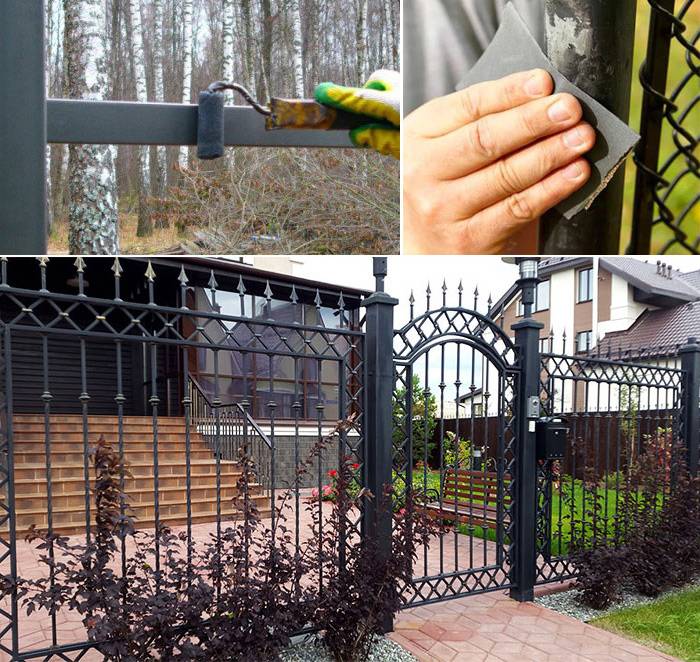Anti-corrosion protection ensures a long service life of any metal structure. Without a protective coating, the fence can last only a few years. To extend the service life, it is necessary to correctly process it, while the method should be chosen based on the material and design features (profiled sheet, mesh, metal picket fence, etc.).
Metal preparation for painting
The preparatory stage is the most important, since it determines the quality of adhesion of the coating to the metal. First, you should clean the fence from old paint, grease, oils, rust and any dirt.
There are 2 main cleaning methods:
- traditional - remove rust with a scraper, knife or wire brush;
- a more effective solution is blowtorch or acetylene torch cleaning. High temperatures cause paint to fade. And a change in temperature ensures that scale and rust fall off.
If it is impossible to remove corrosive residues, paint and varnish materials should be used that can be applied to untreated surfaces.
Applying a layer of primer
The primer protects the metal from corrosion and improves the quality of the bond with the paint. Ferrous metals should preferably be treated with anticorrosive primers. When working with non-ferrous metals, the strength of adhesion to the paint is more important than anti-corrosion protection (copper and aluminum do not rust). The primer can be applied with a brush, roller or spray gun.
Topcoat application
After drying, the primed surface must be painted. Paints and varnishes are also applied with a roller, brush or spray gun.
It is recommended to apply paintwork materials in 2-3 layers. Each should be allowed to dry (depending on weather conditions and type of paint). The most convenient way to apply is with a spray gun. The distance between the tool nozzle and the structure should be 15-20 cm for a good spray.
When using a spray gun, less time is needed for each layer to dry (about 20 minutes). Smooth surfaces can be processed with a roller.
It is advisable to thin it with a compatible solvent in a 9: 1 ratio before applying the paint. With a ready-made solution, the fence is processed in 2-3 layers.
What paint to choose for metal
Experts advise using water-based paints. But they must be designed specifically for metal. The best result is given by acrylics, since they protect the surface from rust formation, exposure to atmospheric precipitation, ultraviolet radiation and other factors.
Anti-corrosion paints have proven themselves well, with which you can coat metal with traces of rust and areas of the old coating. They contain a special solvent, so contaminants are removed during the application process, which prevents further corrosion. There are enamels with special additives: rust converters and a primer to protect against corrosion. But, in any case, the surface requires preliminary cleaning. Only minimal layers of rust are acceptable.
When using paints containing primer, the fence does not need to be primed first. This speeds up the processing process. Ferrous metals are best coated with water-based anticorrosive paints. Such coatings are resistant to UV radiation, moisture and temperature fluctuations.


